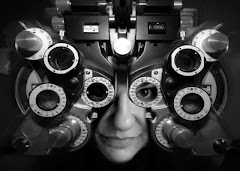The life of a young child is shaped by the comfort of routines -- the growing understanding that when the sun comes up each morning you will be greeted with your mother's kind smile and a warm breakfast, you will play, eat, rest, rock in a chair, pet the dog play, eat again, read a book with your father and, as it becomes dark, you return again to your bed to sleep. The early routines of care and nourishment build trust and attachment, and all of our relationships to follow will be based upon these days, one way or another.
A profound disruption in routine has the power to make a lasting impact on a child, and this was the case for what may be the earliest memory I have. On this day, and perhaps for a day or so later, our house was oddly still and quiet, save for the television news remaining on day and night -- again, very unusual, as both my parents insisted that the TV be turned off if no one was in the room watching a program in order to "save electricity." The light coming into the house was minimal, typical for an early winter's day in Wisconsin, but the grayness seemed darker somehow. I cannot remember any lamps turned on at all.
The people talking on the television were very serious, and some were crying, and it didn't stop. There were no cartoons, no reruns of Ben Casey, no soap operas. Something very bad had happened to make so many grown-ups that sad. My mother and father and brother were so quiet. I padded around the house on my own -- not unusual -- but I felt worried and confused by what I was seeing and hearing. The same name kept coming up over and over again on the television, along with a face I had seen before.
If everyone else was sad, I thought, then I should be sad, too, and cried by myself in front of the TV, silently, until my mother scooped me up and carried me to the black rocking chair, where she wiped my tears and we rocked back and forth until the room was completely dark.
It was November 22, 1963, and I was 19 months old.
NOVEMBER, 1963
Friday, November 22, 2013




